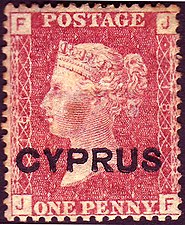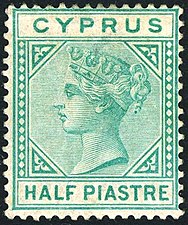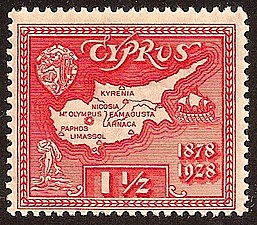East Africa and Uganda Protectorates was the name used by the combined postal service of the British protectorates, British East Africa and Uganda, between 1 April 1903 and 22 July 1920.

A piece of postal stationery is a stationery item, such as a stamped envelope, letter sheet, postal card, lettercard, aerogram or wrapper, with an imprinted stamp or inscription indicating that a specific rate of postage or related service has been prepaid. It does not, however, include any postcard without a pre-printed stamp, and it is different from freepost for preprinted cards issued by businesses. In general, postal stationery is handled similarly to postage stamps; sold from post offices either at the face value of the printed postage or, more likely, with a surcharge to cover the additional cost of the stationery. It can take the form of an official mail issue produced only for the use of government departments.

Austria and other European nations maintained an extensive system of post offices in the Ottoman Empire, typically motivated by the unreliable postal system of the Ottomans.
"French Colonies" is the name used by philatelists to refer to the postage stamps issued by France for use in the parts of the French colonial empire that did not have stamps of their own. These were in use from 1859 to 1906, and from 1943 to 1945.

This is an overview of the postage stamps and postal history of Australia.
This is a survey of the postage stamps and postal history of British East Africa.

The British Central Africa Protectorate existed in the area of present-day Malawi between 1891 and 1907.

Eastern Rumelia or Eastern Roumelia was an autonomous province (vilayet) in the Ottoman Empire from 1878 to 1908; however, it was under Bulgarian control beginning in 1885. The province is remembered today by philatelists for having issued postage stamps from 1881 on, although a postcard was issued locally for internal use in 1880.
Each "article" in this category is a collection of entries about several stamp issuers, presented in alphabetical order. The entries are formulated on the micro model and so provide summary information about all known issuers.
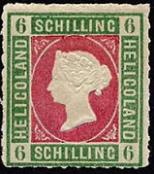
During the period when Heligoland was a British possession, about 20 postage stamps were issued between 1867 and 1890. There were up to eight printings of a single denomination and also a large volume of reprints which are known as the Berlin, Leipzig and Hamburg Reprints, respectively. The Berlin reprints are sometimes better quality than the originals. The reprints were done between 1875 and 1895. Consequently, many "old" collections contain reprints rather than originals. Some believe there were seven million reprints as compared to the known 1½ million originals, of which perhaps half were sold through the post office and the remainder sold to dealers when withdrawn from use. A few printings were never postally sold but nevertheless found their way into the hands of dealers. The stamps were printed by the Prussian State Printing Office in Berlin. They were denominated in the Hamburg Schilling until 1875, when both German Reich and British values appeared on each stamp issue. All are embossed with a silhouette of Queen Victoria excepting the four highest values which represent Heligoland escutcheons.

This is a survey of the postage stamps and postal history of Montenegro.
This is a survey of the postage stamps and postal history of Algeria.

The postal history of Turkey and its predecessor state, the Ottoman Empire, dates to the 18th century when foreign countries maintained courier services through their consular offices in the Empire. Although delayed in the development of its own postal service, in 1863 the Ottoman Empire became the second independent country in Asia to issue adhesive postage stamps, and in 1875, it became a founding member of the General Postal Union, soon to become the Universal Postal Union. The Ottoman Empire became the Republic of Turkey in 1923, and in the following years, its postal service became more modernized and efficient and its postage stamps expertly designed and manufactured.

This is a survey of the postage stamps and postal history of Gibraltar.
Antigua was discovered by Christopher Columbus, in 1493, and was named after the church of Santa Maria la Antigua in Seville. It was first settled in 1632. By the Treaty of Breda in 1667 it became a British Possession.
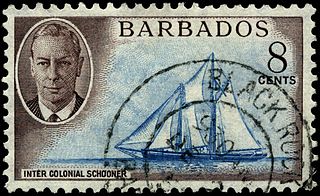
This is a survey of the postage stamps and postal history of Barbados.

This is a survey of the postage stamps and early postal history of Sudan. Sudan was governed by the United Kingdom and Egypt from 1898. Independence was proclaimed on 1 January, 1956, and independent Sudan became a member of the Universal Postal Union (UPU) on 27 July 1956.
This is a survey of the postage stamps and postal history of British Bechuanaland.

The J.B. Catalogue of Malta Stamps and Postal History is Malta's leading stamp catalogue. It was first published in 1984 and is published bi-annually by Joseph Buttigieg of Sliema Stamp Shop. It is currently in its twenty-second edition (2014). The catalogue originally used the SG numbering system, but from the early 1990s it had separate numbering. It is in English and the prices were denominated in Maltese pounds until 2006, and euros from 2008.

The island of Cyprus first issued revenue stamps in 1878 and continues to do so to this day. The Turkish Republic of Northern Cyprus also issues its own revenue stamps.

